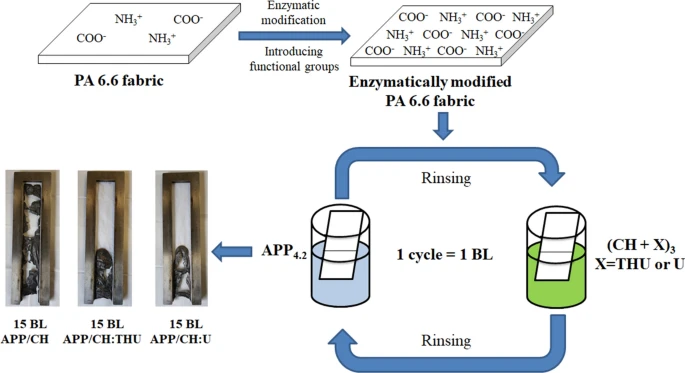Flame suppression of polyamide through combined enzymatic modification and addition of urea to multilayer nanocoating
To overcome the flammability of polyamide, an intumescent ammonium polyphosphate (APP) and chitosan (CH) system, with and without thiourea (THU) and urea (U) dissolved into the chitosan solution, was deposited on an enzymatically modified textile via layer-by-layer (LbL) assembly. Fifteen bilayers (BL) of APP/CH:THU, or 15 BL APP/CH:U, deposited onto the polyamide results in self-extinguishing behavior in horizontal flame testing and a 35% reduction in peak heat release rate (pkHRR). The urea-based additives serve as blowing agents that, upon heating, create gas that increases the bubbled-char structure that acts as a physical barrier. The addition of these low-molecular weight molecules, combined with enzymatic modification of the polyamide fiber surface, is a new opportunity to impart flame retardancy to this highly flammable and widely-used polymer.

